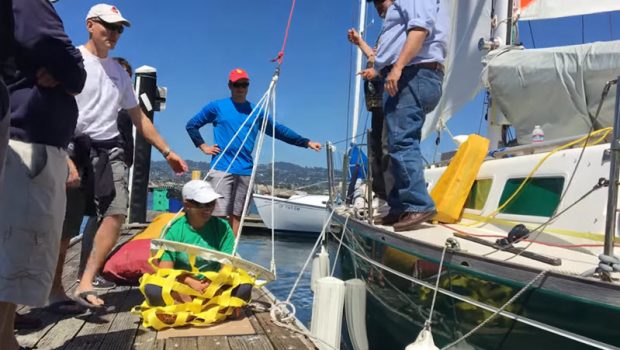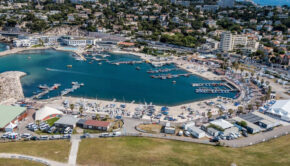Observations from a Safety at Sea Course
Published on March 22nd, 2018
Chuck Hawley is a nationally known speaker on marine safety, and it was from his role as moderator for an International Offshore Safety at Sea Course that he shares these observations:
There were four “stations” comprised of a well-equipped Cal 40s with storm sails and other offshore gear; a classroom with every type of inflatable life jacket and inflation system imaginable; a table with dozens of rigging items, hanks of line, rigging cutters and so forth; and a pool with a life raft. Sailors spent an hour at each station.
I came away with several observations from the weekend that I’d like to explore in future Safety at Sea Courses.
1. Everyone was surprised at how difficult it is to board a life raft from the water when wearing life jackets and foul weather gear. Adding darkness, rough saltwater, and unfamiliarity with the features of the raft would have made it incrementally more difficult. A number of the boarding assists were invisible to the “survivors” from their vantage point in the water. Where to grab handles, where to place one’s feet, etc. proved to difficult in the daytime and would be virtually impossible at night. Prior exposure to your raft under controlled conditions is a must.
2. To demonstrate the dangers of cold water, students assumed a “scarecrow” position in the water to expose the maximum surface area to the cool water. Then they tucked into the HELP (Heat Escape Lessening Posture) position to conserve heat for a minute (ankles crossed, knees drawn up to the chest, elbows pressed against their rib cages). Then they extended their limbs so they were back in the high heat loss position. Everyone commented on the rush of cold water and the benefit of conserving heat using the HELP position.
3. The sailors brought their own inflatable lifejackets from a wide range of vendors, and this caused confusion. The “ripcords” are not in the same location, and may not look anything like the classic “jerk to inflate” lanyard. Many ripcords were tucked into the shroud, preventing access if the water activation did not work. Students with zipper closures on their life jackets had to practice where to burst the zipper to gain access to the oral inflation tube should the device not inflate automatically. The admonition to “know your equipment” was reinforced multiple times.
4. Saturday’s fire demonstration showed that not every extinguisher is equally effective. We constructed a debris fire from waxy cardboard lunch boxes and some lighter fluid. Using a fire blanket, which is required on many ocean races, the fire appeared to be suffocated, but immediately started up as soon as the blanket was removed. Having used a fire blanket in many “grease fire” simulations, it became apparent that the glowing embers of the Class A debris fire allowed the fire to reignite repeatedly. The dry chemical extinguishers were far more effective on it, albeit incredibly messy.
5. Finally, there was curiosity (and confusion) over the various “beacons” that are available, including modern SARSAT items like EPIRBs and PLBs, crew-overboard alarms of various types, as well as AIS receivers and transceivers. The technology is advancing so quickly from the hardware and satellite perspective that it’s very difficult to select various products and which is best for each application. One of the goals of the Safety at Sea Courses must be to categorize and simplify the explanation of the different systems.
To learn more about US Sailing’s Safety at Sea Courses, including offerings in your area and information on how to host a course at your sailing organization: http://www.ussailing.org/education/safety-at-sea









 We’ll keep your information safe.
We’ll keep your information safe.